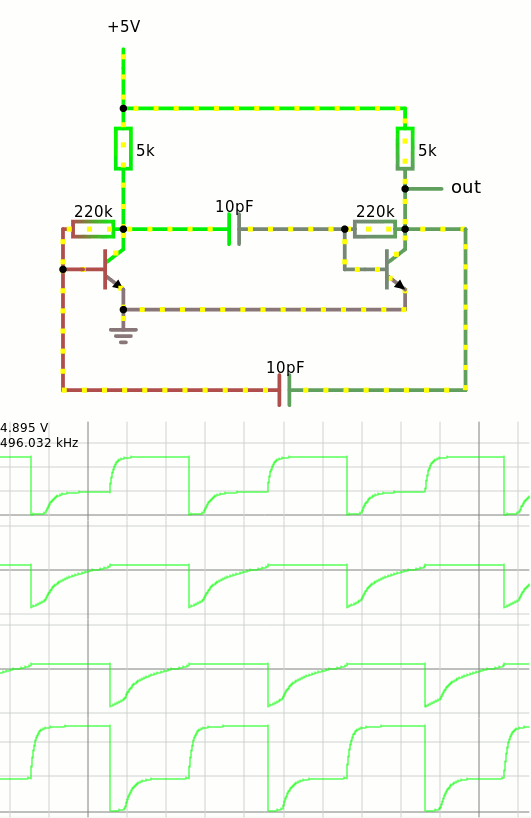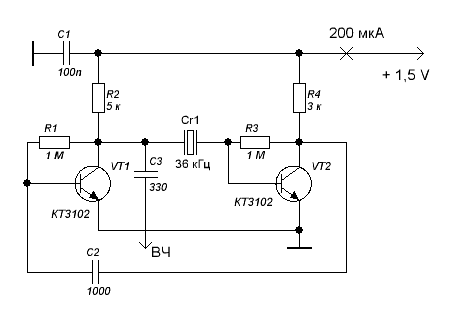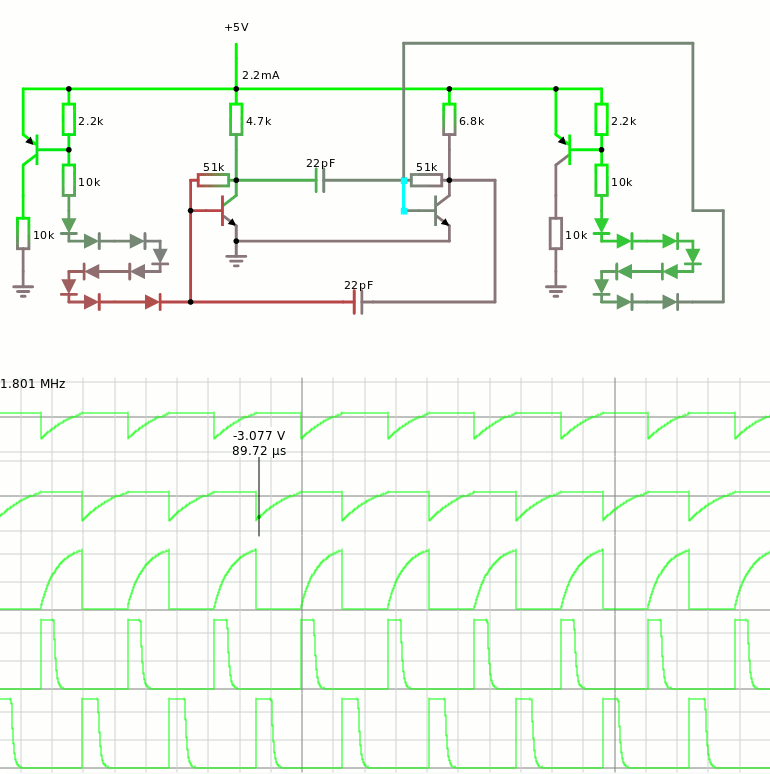I think I cracked another mystery !
Thanks to Falstad :

This is just the same circuit as this one (found there) :

It has been discussed at 12. It just works and 7. Crystal Oscillator (Germanium Edition) from some years ago. I had noticed that the value of C2 was meaningful and tuning R2 and R4 would affect the gain.
It is simply because, when one simplifies the crystal down to a capacitor, the whole circuit is just an equivalent to an astable multivibrator !
So the Rs and Cs need to be tuned to resonate around/at the expected frequency, then the crystal replaces one of the capacitors, and there you have it !
It started raising my suspicion that C2 was more important than I thought, when I saw some strange "motorboating" and the circuit would send a spike at regular intervals.
Usually I set C2 to a pretty large value because I considered it as a DC blocking capacitor that would feed the output signal back to the driver. But regularly, I would see spikes that would "shake" the crystal and change its operating conditions.
I thought it was a great thing because it would "kick" the crystal by itself, without manually snapping it with a finger. I would just have to find a suitable period, like, 10ms or such, to enable a fast startup. When the oscillation is settled, some other mechanism would prevent the LFO from "kicking in".
But if the whole circuit is tuned, the gain is much better and there is no need to periodically kick/pulse anything. Then the only question is : what is the equivalence capacitance of the crystal ? From there, t=RC and a crude value for the resistors can be found.
So yes @SHAOS you were right ! the value of C2 matters ;-)
The other nice thing is that it can generate "non overlapping pulses" that could drive the flip-flops. However the tuning of the capacitors makes it very frequency-dependent.
Here is the schematic at work :

The capacitors generate negative spikes (triangles) that can be sensed to drive the amplifiers on each side. The string of diodes as well as the series resistors 2.2K/10K help tune the width and overlap of the pulses shown at the bottom.
with ideal transistors and 22pf capacitors, the system reaches 1.8MHz in the simulator, which can be increased by reducing the base and collector resistors.
 Yann Guidon / YGDES
Yann Guidon / YGDES
Discussions
Become a Hackaday.io Member
Create an account to leave a comment. Already have an account? Log In.